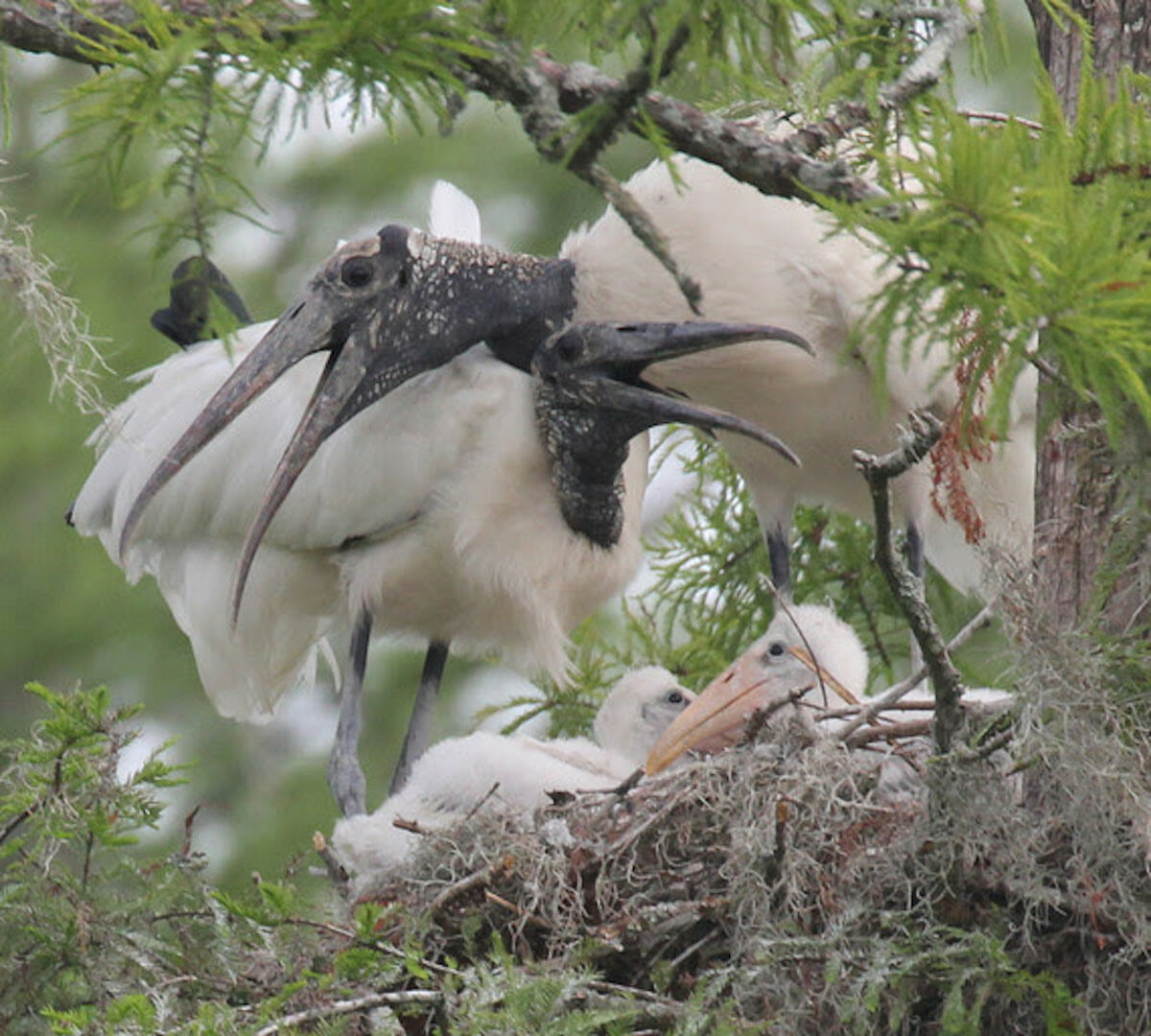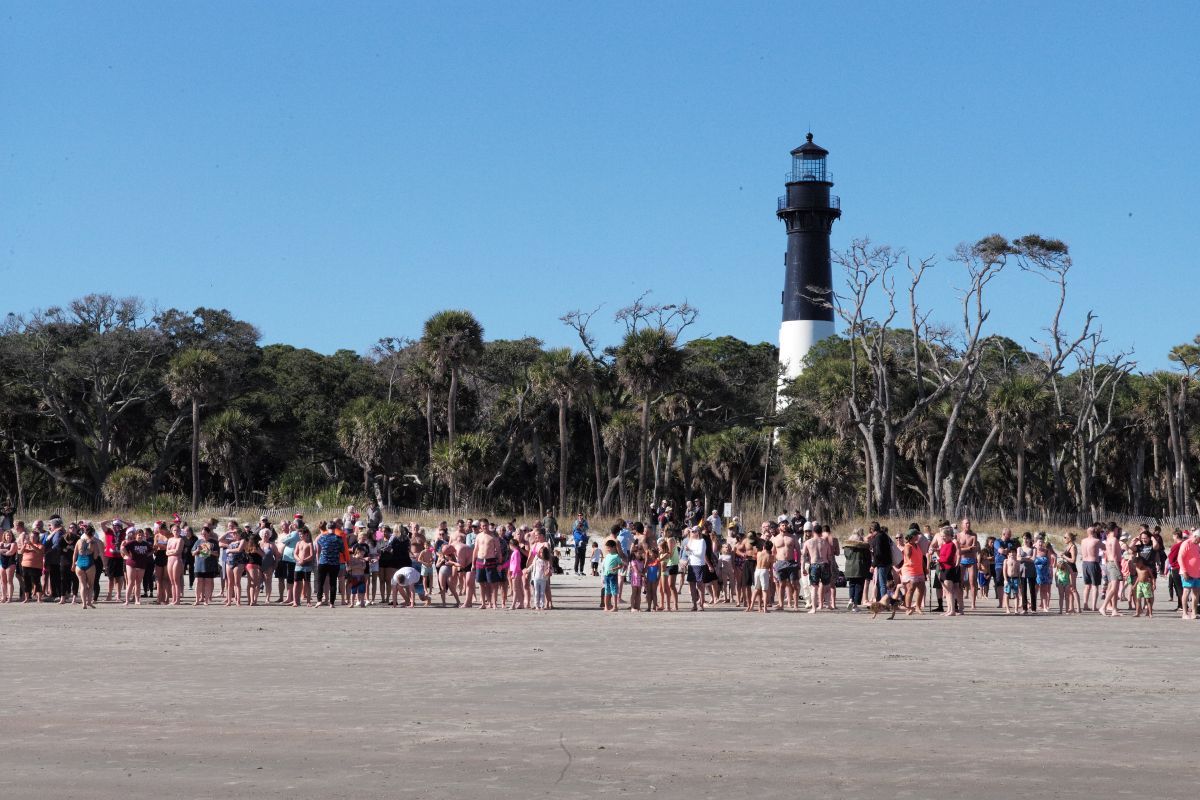From staff reports
A record number of wood stork nests were recorded in South Carolina in 2022, the third time in the past four years a new mark was set for the state.
South Carolina Department of Natural Resources biologists and technicians counted 3,928 of the wading birds’ nests this year, up about 400 nests from what was a record number in 2021 and nearly twice as many nests as were counted in the state a decade ago.
Wood storks were reclassified from federally endangered to federally threatened during 2014 in response to increasing population trends. Much of the wood stork population’s recent growth in the United States has occurred in South Carolina. While the highest numbers of nests remain in Florida, the South Carolina Lowcountry – particularly the ACE Basin – has during the past decade become a site with one of the highest densities of wood stork colonies along the East Coast.
The rise in recent years could be attributed in part to storks moving up from Florida during years when the Everglades are less suitable for nesting and foraging. The increased numbers are also a testament to the successful management of impoundments and wetlands conservation efforts in the ACE Basin, a triumph not only of the work of state and federal biologists but also of private land managers’ increasing willingness to manage wetlands for the benefit of wading birds and shorebirds in addition to waterfowl.
For instance, periodically drawing down the water level in waterfowl impoundments throughout the summer and fall as part of the management cycle to provide feeding habitat for wintering ducks can allow wood storks to move in and feast on shallow pools full of small fish.
Wood storks are larger than other wading birds and require a lot of food in areas they plan to nest. The birds forage for food in tidal impoundments, flooded forests and other floodplains where receding water forms shallow pools that trap fish and make easy, fulfilling meals for the wood storks.
“We have this diversity of wetlands where storks can feed,” said Christy Hand, wading bird biologist for the South Carolina Department of Natural Resources. “And it means that if one type of wetland is not optimal for storks, they have several different options.”
Long-term threats to the wood storks’ continued breeding success include the Cuban bulrush, an invasive plant, and the effects of climate change and sea level rise.
Cuban bulrush grows in dense mats that cover water, crowding out native plants and forming walkways for predators such as racoons to raid wood stork nests for eggs.






